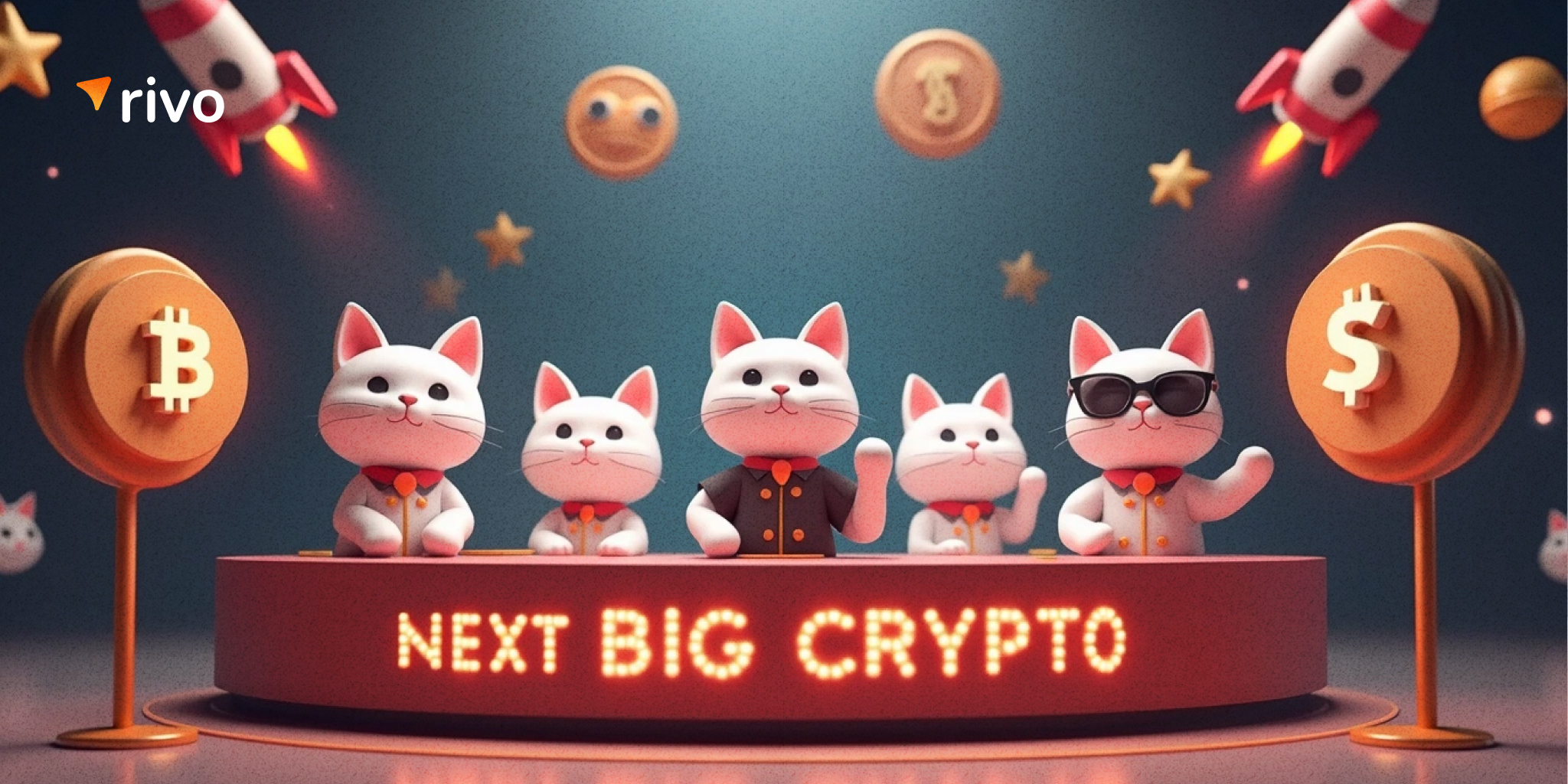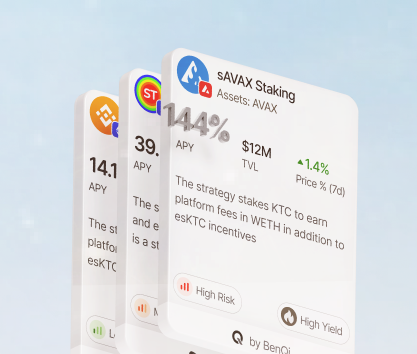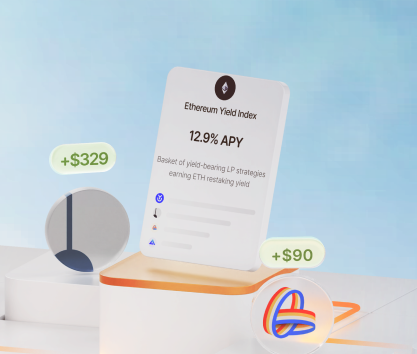The current decentralized finance landscape is diverse and versatile with over 1,400 different protocols available to investors interested in swapping assets or allocating capital to various liquidity pools in exchange for rewards. With the number of chains increasing regularly, the need for chain-specific decentralized exchanges is growing too. The competition is fierce while interoperability plays a huge role in the development of the sector in the foreseeable future.
This diversity looks like a huge advantage but the reality is more complex as many protocols offer a subpar user experience and others fail to achieve high adoption rates. The underperformance of many DEXes leads to a visible oversaturation of the market with hundreds of options being completely useless. We are going to talk about how to pick the best DeFi platform for cryptocurrency trading in 2024 while considering some important criteria.
However, we must briefly discuss the ecosystem, its defining types of platforms, and the reason why decentralization is one of the biggest trends of the early 21st century. It is important to know how to operate in this complex environment, pick appropriate protocols to work with and focus on investment opportunities that make sense for different styles of risk and asset management. Hopefully, by the end of the article, you will have a better understanding of how to choose the best platforms.
What are decentralized exchanges?
After the crypto market was established as a relevant financial environment worthy of exploring, P2P exchanges were the biggest platforms. However, the counterparty risk ruined the experience for millions of early adopters. The first attempt at fixing the issue was the introduction of centralized exchanges (CEXes) that took user funds into custody and operated much like brokerage service providers and traditional exchanges.
The idea of centralized custody rubbed many crypto enthusiasts the wrong way. Ethereum, in part, was created as a solution to the issue of counterparty risk that should not exist in a sufficiently developed blockchain ecosystem. Many DEXes operate using the same basic principles that were outlined by Vitalik Buterin in its paper on the matter.
A decentralized exchange is a protocol that uses smart contracts to facilitate trustless and permissionless transactions between the participants of the DeFi ecosystem. This is achieved through the use of liquidity pools that are managed by tiny programs executing transactions under specific circumstances.
The typical process looks like this:
- A smart contract checks the availability of funds specified in the trade request in the wallet of an investor.
- After confirming the availability of assets, it will calculate the necessary amount of assets to extract from the pool and deliver to the investor.
- The transaction is performed only once using the parameters established during the first two stages. To reduce costs, layer-2 solutions are often used.
This design allows users to swap assets quickly without ever losing control of their assets. The whole process is largely autonomous and does not require any human intervention.
While decentralization seems like a good idea to many investors, there are some issues that still require sorting out. As mentioned previously, the operation of a DEX platform is mostly automatic and does not require any supervision. However, it means that any weakness in the smart contract design can be easily exploited if the development team does not identify potential vulnerabilities quickly and deploy countermeasures. In many cases, it means simply disabling the older version of the smart contract and deploying a new version with exploits patched up.
Before we talk about the benefits of interacting with contemporary DEXes, we need to address the weaknesses that make many investors hesitate about joining the DeFi ecosystem.
Despite the best efforts from the community and developers of protocols, many DEXes remain risky places for traders who want consistency, safety, and high liquidity among other things from their trading platforms. Below are several critical issues that negatively affect the DeFi ecosystem:
- Low liquidity compared to CEXes. Uniswap, the biggest DEX with a massive $4.6 billion daily trading volume, is still dwarfed by Binance with its $10 billion volume. When liquidity drops below certain thresholds, investors experience slippages (when the real price of assets changes compared to the expected value) which is a big deal for people with large portfolios who often move significant amounts of assets. In some extreme cases, slippages can lead to deviations higher than 5%.
- Impermanent loss deserves a separate mention while we are on the topic of liquidity which is acquired from investors willing to contribute to special pools that facilitate exchanges by maintaining a certain ratio of paired assets. Since this ratio must be kept stable at all times, adjustments may happen frequently. If market prices start fluctuating, the difference between the entry price and the current price can lead to losses that are not realized until investor pulls their funds out. However, over 50% of all UniSwap liquidity providers suffer permanent asset loss.
- A fragmented ecosystem prevents investors from efficiently moving capital within the sector to search for better investment opportunities. While cross-chain interoperability has improved dramatically during the last three years, we are still nowhere near the necessary level of interoperability required to build a thriving financial ecosystem. Bridges are also quite vulnerable to hacker attacks with cumulative losses to security breaches eclipsing $3 billion in 2021.
- Front-running is still a big issue. The transparent nature of DEXes is simultaneously good and bad for the market. It makes everything easily verifiable and maintains a high level of data integrity. However, the same transparency makes all requested trades visible on-chain before they are settled making them prime targets for crafty traders who may take advantage of price changes. Miner extractable value (MEV) generated over $600 million in malicious profits for validators who reordered transactions to increase gains.
User interface and user experience
These issues are significant and can lead to major losses for investors but they are still less impactful than the difficult onboarding scaring away millions of potential users. There are several issues with user interface that must be mentioned:
- UI issues persist despite many DeFi protocols investing heavily in UI development and quality assurance. The main problem here is the unfamiliarity of many newcomers with crypto wallets, transactions, digital asset management, and other features that many development teams struggle to simplify through excellent UI improvements.
- The lack of educational materials is another big issue for the DeFi ecosystem in general. Extensive documentation is useful to technically savvy individuals but many newcomers see nothing but an overly complicated wall of text oversaturated with industry-specific terminology. With learning curves being quite steep, it is hard for beginners to get started.
- The complexity of the technology. Many newcomers struggle to get a good grasp of gas fees that can be different depending on congestion and demand. In 2021, Ethereum transactions could reach $200 per operation. Some newcomers simply do not understand why they are charged differently. The high rate of transaction failures also negatively affects adoption. In the same 2021, UniSwap failed to finalize 1.5% of all ordered trades.
Decentralized platforms are often cited as unreliable due to many potential vulnerabilities. With a relatively small number of protocols focusing on external code audits and offering generous rewards to bug hunters, the industry is full of picturesque examples of things going wrong after a safety failure that was easily avoidable even without hindsight.
Here are some important factors to consider:
- Smart contracts can have critical exploits. Many crypto enthusiasts without a deep understanding of the technology behind DeFi protocols think that self-custody means that you are safe as long as you follow the necessary guidelines (like storing private keys well and using two wallet addresses). Unfortunately, smart contracts you interact with can be dangerous. Even the biggest players in the DeFi sector have been exploited by hackers. For example, the PancakeSwap on BSC lost over $200 million in 2021 due to a bug.
- The absence of consumer protection. The vast majority of DeFi protocols are still in the Wild West territory with many projects pushing memecoins and potential rug pulls to the top of the market. Since governments are still trying to tackle many issues related to cryptocurrencies, consumers do not have a legal framework to fall back on if they become victims of fraud or theft. While not directly related to security from the technological point of view, this particular problem is very concerning since many investors do not realize the magnitude of the risks.
The industry has many potentially weak points. Bridges immediately come to mind. These are useful yet unreliable setups since they are connecting two fully decentralized infrastructures through the use of Oracles which are centralized entities. It means that vulnerabilities can be found in smart contracts on the DeFi side of the system and in the architecture of the centralized intermediary on the CeFi side. In some cases, aggregators and CeDeFi platforms may interact with pools managed by other protocols in ways that expose them to additional security threats.
Security and liquidity evaluation criteria
When you are trying to find the best DEX to work with, it is hugely important to focus on several parameters, namely, the level of security and the available liquidity. Other factors that demand attention are supported chains, APYs, reward structures, and available digital assets. Let’s tackle these factors one by one with a strong emphasis on the first two.
- Security can be evaluated by doing your own research of the platform and gauging the community sentiment which can be done via visiting social networks pages and forums subreddits on Reddit. Discord groups can be helpful too. Additionally, you should check out whether protocols that you like use external smart contract audits and/or run bug bounty programs. For example, MakerDAO offers $10 million for critical vulnerabilities found by bug hunters!
- DeFi platform liquidity can be evaluated by using a variety of approaches. When possible, you should apply all of them. The first telling factor is daily volume which represents the total value of assets that were exchanged within the last 24-hour cycle. It is a great way of gauging the available liquidity. The second important metric is TVL in liquidity pools. A high total value locked indicates deeper liquidity and higher throughput. For example, the WETH-USDT pool on UniSwap has a high TVL of over $131 million.
- Supported chains and assets are also quite important since variety and flexibility make it easier for investors to build portfolios that perform well. The biggest DEX in the DeFi sector is UniSwap. It supports 23 different chains including the likes of Ethereum, Polygon, Cosmos, Arbitrum, BSC, and many others. The protocol supports more than 3,200 currency pairs. Many investors will find a plethora of investment opportunities that go well together. Other multi-chain protocols are Curve (8 chains), Balancer (9 chains), and PanCakeSwap (9 chains).
- APYs should be among the top priorities for investors who are not interested in active trading. If you are after consistent passive income strategies, investing in high-yield protocols can be a good idea. You should never forget about risks but some options are too lucrative to pass without giving it a chance. For example, the OVN-USD+ pool on Aerodrome offers a 193% reward APY (paid in AERO) with an impressive 30-day mean average of 172%. Aero has been doing well recently and many investors cashed out with huge profits.
Decentralized exchanges and stablecoins
The vast majority of DEXes are very interested in attracting investors with large stablecoin holdings since these tokens are used to create the most popular currency pairs and can be used for a variety of purposes including cross-chain trading. All DEXes support at least one stablecoin and many offer pools for a variety of such assets.
Here are some of the most popular stablecoins in the DeFi sector:
- USDC is a stablecoin issued by a centralized institution. However, it is a useful asset pegged to the US dollar. It has overtaken USDT in terms of adoption by protocols but still clings to second place in trading volume. USDC has a massive $36 billion market cap.
- USDT is issued by a corporation called Tether. It is yet another stablecoin pegged by the US dollar and backed by the treasury. USDT has a $120 billion market cap and controls a huge 61% of the market. However, it is used in the CeFi sector more with USDC holding a much higher DeFi market share.
- DAI is one of the oldest stablecoins issued by the fully decentralized organization MakerDAO. This stablecoin is backed by the assets in reserves and treasury. DAI can be used for a variety of purposes including liquid staking through the DSR module or direct trading in the Ethereum ecosystem.
Finally, we want to give you a list of interesting DEXes that deserve your attention. Note that we do not endorse any of the platforms below. The information is provided just for the sake of general education.
- UniSwap is the biggest DEX. It was initially deployed on Ethereum. Today, it supports 23 different chains and over 3 thousand different asset pairs. The average APY across all tracked pools is 30% which is incredibly impressive. It is still the biggest protocol by trading volume with daily values exceeding $180 million regularly.
- Curve DEX is another Ethereum DEX with a massive $1.7 billion TVL, 546 tracked pools on the Curve Finance module with an average APY of 6%. Curve is one of the best destinations for yield farming as rewards are paid in CRV/CVX tokens that have utility or grant you voting rights in the DAO.
- PanCakeSwap is a BSC-based exchange that supports 8 different chains including Aptos, Ethereum, Arbitrum, and BSC. The TVL is also $1.7 billion and daily trading volumes routinely eclipse $55 million with over 30 thousand unique wallet addresses interacting with the protocol every day.
These protocols are good choices for investors interested in actively trading or parking capital in a high-yield pool. However, you should always do your own research before committing to any of the DEXes that you find in the DeFi sector!









